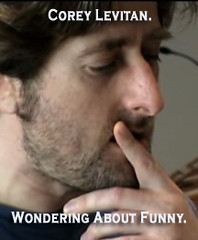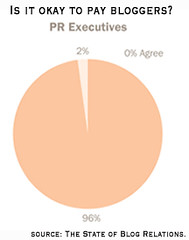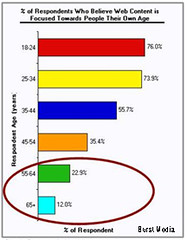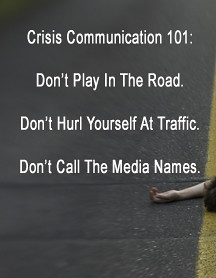"Without question, there are passionate viewers watching this program; we simply wish there were more," said Nina Tassler, president of CBS Entertainment. "We have no regrets bringing the show back for a second try."The statement, which is now circulating throughout the media, demonstrates that CBS has learned something since the first time it issued a cancellation announcement for Jericho last May. Engaged fans expect polished public relations. Her original statement last year demonstrates the difference.
“ … that show would still be on the air if the audience was there. No programmer wants to p.i.s.s. off their audience. When that happens, it's unfortunate. Part of what we try to do is create viewer loyalty, and then build on that ... but we're running a business," she said then.Along with the original statement, Tassler and CBS are making a sellable case. Given that last fall, Jericho averaged 10.5 million viewers. After an elongated Spring break, which CBS admits was a mistake, it fell to 8.1 million. One year later, the ratings place at 6 million.
The numbers, void of any mention of online viewership that CBS touts in other quarters, creates the illusion that maybe the fans didn’t pony up. “You’ve got to recruit more viewers,” Tassler had said, immediately following the decision that seven episodes were a small price to pay to stop the public relations
hemorrhaging.
In fact, low broadcast ratings have prompted more than one publication to place the blame squarely on fans. The most condescending of the which seems to belong to the article penned by Lisa de Moraes of
The Washington Post.
“In fact, while the Jericho Rangers are extremely good at buying peanuts, they proved completely inept at recruiting new Rangers,” she said.She can make the case, but is that accurate? Are fans to blame? Did consumer marketing and social media prove to be a bust? Partly, for circumstances that exist within the Jericho fan base (but not within the fan base of all cancelled shows), but not in the way de Moraes makes her case.
If Jericho the fan base was inept, it was only because their indecision was nurtured by the network with mixed messages and a few fans who grossly misinterpreted them.
Isolated Fandom. Some fans insisted (and still insist) that all efforts needed to stay close to the CBS site. Ask anyone engaged in social media and they will tell you: social media cannot exist in a vaccum. Ho hum. The “build it and they will come” concept only seems to work for ballparks in cornfields.
It was offsite Jericho blogs,
fan forums, Web sites, a few limited fan efforts within the quietest pockets on the CBS site, and face-to-face recruitment efforts that captured new viewers. Despite many of these offsite locales being under supported, discouraged, and targeted for banishment, they still managed to expand the network’s limited net
presence. Before turning over the CBS Jericho blog to a fan, one employee did drop a hint, pointing fans
here.
Braveheart Revisited. Several times, a few willing and highly qualified fans seemed poised to take a
leadership role. Unfortunately, they quickly found the same
fate as William Wallace. Their own “countrymen” would periodically draw and quarter them for any criticism aimed at the network. Yes, in public.
"If everyone is thinking alike, then somebody isn't thinking," the real Gen. George S. Patton once said. The same holds true here. Had the original campaign leaders been left in place, fans would have the direction they need today. Instead, some of the most active supporters are already saying goodbye. Instead, fans got
fillers.
Internal Sabotage. Whether it was intentional or unintentional doesn’t matter, but several fans had taken to periodically attack dissenters using a number of anonymous names to further their agenda. Worse, forum board dramas drove hundreds of old and new fans from CBS.
The cause? Without any clear
direction, unbelievable arguments over who came up with the idea to send nuts, who had more inroads with the network and production team, and whether the “who” of an idea meant it had had more merit than whether it was a good idea. You know, the kind of stuff that new viewers would take one look at and turn tail. Alas, for want of a crown, these misguided few lost a kingdom.
But the misguided actions of a few still do not support the case presented by The Washington Post. The vast
majority of fans sounded more like those I profiled on Feb. 9.
While fans might have misplaced their faith in CBS, it was the lack of network communication that ensured the cancellation of the show a second time.
• The timeslot was contrary to the demographics of the show, which included families. The 10 p.m. timeslot was just too lat for this show.
• The network promoted Jericho on CBS, but that was the extent. While some promos had peak time slots, there simply are not many CBS shows that provide a clear crossover audience. The CW would have been different.
• The second season public relations party brought the show back with a whisper. It was so quiet, even the media was amazed. Fans were left scratching their heads.
• The network never considered that the public might not tune into a show with an insecure future. So, when it made a big deal about two
endings being shot, the announcement hurt more than helped.
• While they did not
intend to leak the first three episodes, those episodes did leak. The significance? No one knows how many Nielsen families didn’t turn in after that.
• An entire year went by before Jericho returned. For a long time, the fans had no idea when it might come back. If an extended mid-season break hurt viewership the first time, what could anyone expect a year later.
• At one point there was some limited digital media stories as originally promised, but they never progressed in any tangible way. Any thought of CBS merchandising items, like Bailey’s Tavern glasses, was nonexistent.
• The network’s half-action several times
split the fans into two groups: those who believed CBS would support the show, and those who did not. Those who placed their faith in CBS won the argument, but those who lost were right.
• The network did virtually
nothing substantial to market the DVD. The little it did do, did nothing to attract new viewers.
• The network had rebroadcast Jericho in an odd order over the summer, until pre-empting it with football. Football wasn’t the issue; the issue was it had thousands of Jericho fans asking people to tune into bumped programming.
• The network provided online episodes and clips online, but without much marketing support for the varied platforms where it could be found. It got better, but in the end, those numbers didn’t count anyway except to market future online endeavors.
• The network talked about a partnership that we warned would never
exist. Several times they hinted at promotion, causing the fans to hold their breath, and then pulled back with nothing.
And the list goes on, with many posts on this blog and elsewhere pointing out the hits and misses. Sure, CBS did some things right too. The fans even more so.
So who is to blame? The
network? The
fans?
Nielsen? The media? Everyone. No one. It doesn’t matter. Tuesday, March 25 is the last episode. It starts at 10 p.m. Case closed, sort of.
While I’m not sure many of the fractured ideas being discussed by fans today will work, I am sure that some of these fans will develop a standalone fandom. Others will find new shows to fight for. And yet others are already moving on to focus on the bigger picture of ensuring the ratings system captures a better sampling (ideally, everyone). But there is something more important than that.
I made a lot of great friends, both Jericho fans and even a couple folks on the network side. Perhaps not all of them, but many of these friendships will transcend tomorrow night.
You see, Jericho Rangers are pretty great people when you get to know them. And I know for a fact that many of them don’t need one show to be great. They are great regardless. And much like no one can take away that these fans are responsible for the fastest cancellation reversal history or played a role in pushing television in a new direction, no one can take that away from them either. Good night and good luck.





































